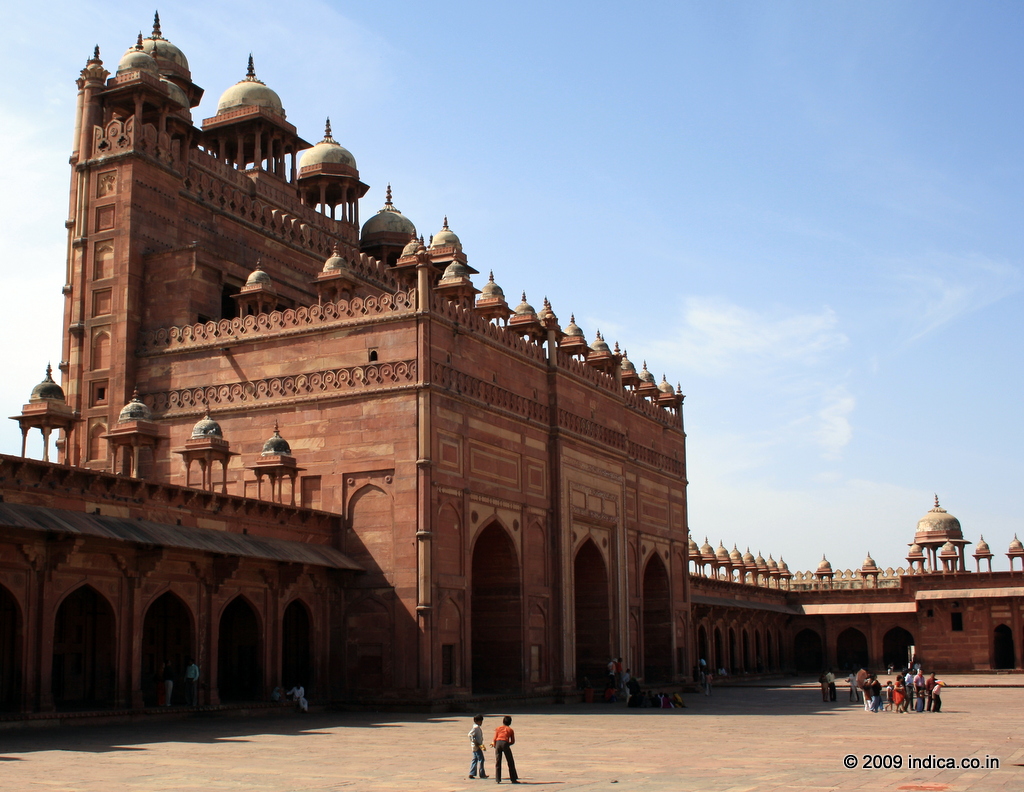Jama Masjid
T
he elegant Friday prayer mosque.Fatehpur Sikri – Jama masjid was mainly meant for the Friday congregational prayers. It is one of the most beautiful and largest mosques in the world.
As the building was considered to be very sacred by the muslim emperors, it is situated on the highest point of the ridge in the location of Fatehpur Sikri. Included in the complex of this large mosque are the Buland darwaza and the tomb of the sufi saint Sheikh Salim Chishti. It has been noted by historians that the saint himself supervised the construction of this mosque complex and the construction was completed in 1571.
The entire Fatehpur Sikri – Jama Masjid complex is in the shape of a large quadrangle and on the western side there are ornate chhajjas which are broad and slanting.
There are also beautiful brackets topped by a series of chhatris which are square in shape and are situated on the other three sides whereas the Buland Darwaza is situated on the south.
The Badshahi Darwaza is situated on the east. The tombs of Sheikh Salim Chishti and Islam Khan and the tank meant for ritual ablutions are situated in the courtyard on the inner side. The main mosque is rectangular in shape and has a nave in the center with a single dome.
There are two halls with colonnades on both sides and two chambers square in shape and crowned with domes. There are elegantly carved beautiful mihrabs which adorn the main chamber and the two smaller rooms. The architecture of the Jama masjid is significant because of its blend of Islamic and Persian art.

Verandah at Fatehpursikri's Jama Masjid
Verandah at Fatehpursikri's Jama Masjid

Gateway viewed from the open court inside the Jama Masjid, Fatehpur Sikri
Gateway viewed from the open court inside the Jama Masjid, Fatehpur Sikri
